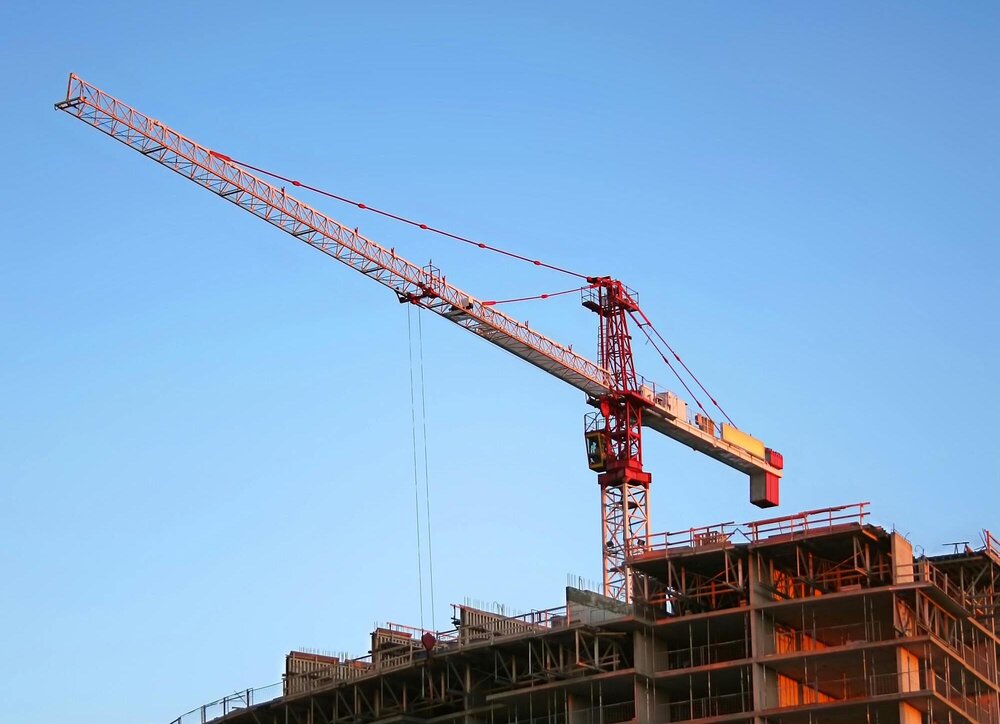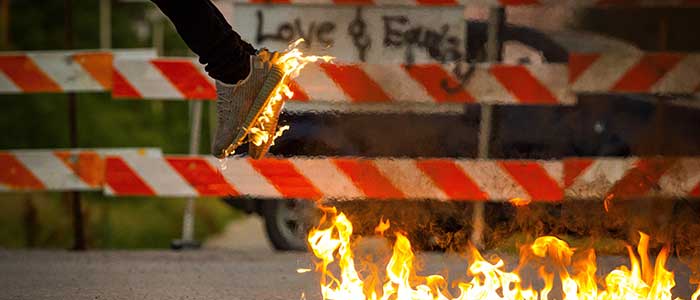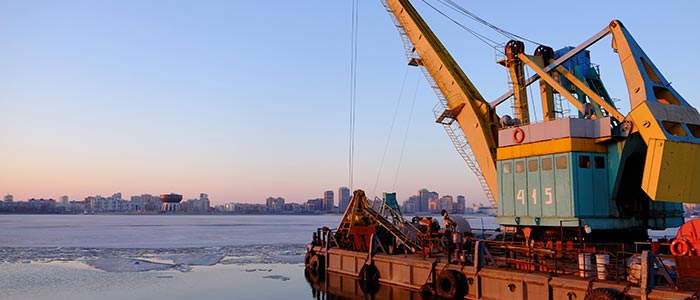Dashpivot article – What main headings should a Construction Phase Plan contain
What main headings should a Construction Phase Plan contain?
This article provides an in-depth analysis on the headings to be included in a Construction Phase Plan (CPP).

How Should Information be Structured Within the CPP?
Information within the CPP should be simple and straight-forward. This makes it easier for duty-holders to adapt into their roles and proactively comply with the strict health and safety regulations like the CDM 2015 in the UK.
For more information regarding the health and safety regulatations outlined in the CDM 2015, refer to the CDM Regulations Construction Phase Plan article.
Duty-holders, and anyone involved in the construction project, can quickly reference key sections without missing out or overlooking essential and critical safety information. It is likely possible that information will be missed out if the CPP isn’t direct. Lengthy and overly complex CPP can cause information overload and overwhelm workers. With a disorganised system, there are high chances of struggling to find the necessary guidance and safety protocols in the plan. Unclear explanations may cause misinterpretations and confusion, delaying work even more because workers have to interpret or ask for guidance. There are also high chances that if a CPP is extremely complicated and long, workers may not even want to read and implement the practices, which unfortunately results in non-compliance with the health and safety regulations. Most importantly, when emergencies arise, they would need to access the emergency procedures as laid out in the CPP, but if it’s poorly structured, emergency responses might be delayed. Using a concise, direct, and well-organised structure that fully outlines only what needs to be written avoids all the unnecessary complexity.
Being a central document for health, safety, and site management information, it should contain the proper information and relayed in an easy-to-navigate structure that makes communication between duty-holders seamless and quick. There are many persons and stakeholders involved in a construction project, so creating a user-friendly guide allows everyone to apply the safety measures without confusions. Regardless of the kind of construction project, of the size of the project or the number of workers involved, hazards will always be present. A proper, clear, and logical CPP enhances safety and risk management, and saves time and reduces errors. Maintaining a safe working environment and making it easier for everyone to do so should be the priority when structuring a Construction Phase Plan.
Essential Headings in a Construction Phase Plan
Introduction, Project Description, Overview, and Scope of Work
A CPP is started off with a proper introduction such as the name of the project, address or location, name of the client, detailed overview, including the scope of work, key project objectives, and the expected outcomes.
For the timeline, it must be properly defined by specifying the start and completion dates, and by setting the major timelines and deadline. This is so that all key persons involved have an idea on the workaround schedule and expectations. Furthermore, setting this at the beginning of the CPP allows managers to coordinate tasks efficiently among workers, allocate resources effectively, and even identify delays ahead of time.
Additionally, information about the duty-holders like the principal contractor, client, designers, and other contractors would be helpful for everyone to know about their key responsibilities and including the project’s requirements.
Roles, Responsibilities, and Contact Information of Duty-Holders
This is the section of the CPP where the roles and responsibilities are defined across the personnel involved in the project to ensure that they fully align their work within their responsibilities, promote accountability, maintain compliance, and to ensure proper and efficient project execution. This section should include the method or lines of communication, how each duty-holder reports to one another, how their responsibilities should be implemented, and how they will be monitored throughout the project.
This section also includes emergency contact information so that there is a proper communication method.
Health and Safety Management
This section of the CPP outlines all the health and safety strategies, procedures, and measures to be implemented in the construction project, ensuring a proactive safe working environment.
At the beginning, it would be ideal to write down a summary of the construction project being compliant with the CDM 2015 regulations and the project’s overall commitment towards promoting a safety-first culture. This helps set in the minds of the key personnel involved that the principal contractor is aligned with the strict health and safety standards of the UK, and gives peace of mind to the workers that their well-being is prioritised.
Another area of this section is the risk assessment identification and control measures. Before the construction work starts, it’s essential to write down the common hazards and risks involved in the construction project by going through a history of similar hazards and risks in a similar project, assessing the construction works to be done based on the designs, and consulting professionals. Risk Assessment and Method Statements (RAMS) could be implemented to outline the control measures in place or use other mitigation strategies as per the guidelines and safety procedures under the Health and Safety Executive (HSE).
Another important element under this section is laying out the site rules and safety procedures. There should be general site rules in place as a guide for workers to follow, including a list of personal protective equipment (PPE) requirements, informing about restricted areas, signages and security protocols, and the general safety guidelines on using tools, equipment, or machinery.
The main reason there are general rules, safety guidelines, and safety procedures are to avoid chances of having incidents and accidents, however there are unavoidable instances where they occur. Included in this section is the methodological steps for reporting accidents, near misses, and occurrences, and more importantly including a proper emergency procedure, fire safety procedures, first aid information, and evacuation routes. It’s essential to keep this part of the section direct to the point, concise, and easy to understand for workers. This way, workers can know the proper procedures when accidents and incidents occur without confusion. Similarly, when they need to search for emergency procedures, they can easily find the information in the CPP.
Included as well in this section are a list of training, certification, and competencies of workers should have and making sure that they are competent for their tasks. That also involves toolbox talks, health and safety briefings, and induction procedures of general safety rules as stated in the CPP for the new workers and site visitors.
The construction industry is dynamic, and so is the CPP. There should be regular site inspections, compliance checking, and audits to make sure that the site is adhering to safety protocols. This should be included in the CPP. Additionally, because the CPP is a dynamic and living document, there will always be revisions and updates, meaning there should be a procedure on how to review and update the safety measures. Most importantly, include a procedure in appointing a designated safety officer in the organisation to oversee the implementation of safety procedures.
General Site Rules, Working Procedures, Access, Waste Management, Housekeeping
In order to maintain an organised site in a construction project, it’s essential to establish mandatory guidelines that all personnel and duty-holders must follow.
First is the section for the general site rules. There are generic ones to be followed that align with the CDM 2015 and other best safety practices suggested by the HSE, but it can vary from site to site. Some generic ones are mandatory site induction before starting work, proper signing in and out of work, PPE, authorised entries, zero tolerance policy for drugs and alcohol, or smoking rules.
Another are guidelines on the accessibility and movement on site. Depending on the project and its location, the site traffic rules may differ.
For waste management and housekeeping, all work areas should be clean and free of obstructions to avoid near misses and accidents. There should also be designated areas that follow environmental regulations for proper waste disposal. And when handling hazardous substances, they should be stored and handles under the Control of Substances Hazardous to Health (COSHH) guidelines.
Construction Activities
This section makes sure that each construction activity are properly carried out systematically, with methods and safety measures in place to maintain compliance with the CDM 2015 regulations.
Normally, the construction phase is categories into stages, and for each stage there are construction activities that need proper methods. This is extremely helpful in guiding each key personnel and duty-holder to the construction works to be done, and similarly, this is also helpful in setting the project timeline and schedule.
This section makes sure that each acidity in each category are well-planned and efficiently managed by the contractor and workers.
Resource Management
This part of the CPP details the proper and efficient allocation and management of resources like materials, labour, equipment, and finance all throughout the project. The correct resource management should make sure that the entire project remains cost-effective, within schedule, and compliance with standards.
For materials, there should be a list of materials needed, storage and inventory management, sustainability and eco-friendly practices to be implemented, and using the Just-In-Time (JIT) delivery approach to minimise the amount of inventory held on hand. This is most especially helpful to reduce overall storage costs.
For labour, there should be a list of required personnel, their certifications, training, experience, the workforce scheduling, and the health and safety training they have attended or will attend to comply with the regulations.
For the equipment and machinery, there should be a list of all the tools and machinery needed for the project, including their schedules to avoid multiple people reserving a machine at the same time or for downtime, routine maintenance and inspection, and even operator training requirements.
For the finances, included should be the breakdown of project costs among the labour, materials, equipment, subcontractors, etc, and a cost control measure to avoid over-spending in the project. Using historical data, assessments from professionals, and projections, whether manually or using tracking software, there should be proper budget management. Included in this section is the regular financial reviews for the project to stay within its budget.
Monitoring, Review, and Update Procedures
This heading covers the mechanisms for performance monitoring, reporting, and regular reviews. It also details how the CPP will be updated in response to changes in the project or external environment.
For more information on the general contents, components, and roles and responsibilities under the CDM Regulations, refer to the CDM 2015 document provided by the Health and Safety Executive (HSE).
You can also refer to the form below, which is used by hundreds of construction companies to frame their construction phase plan headings and contents.

Use the main headings from a Construction Phase Plan in this form
What's Next After Getting the Main Headings of the CPP?
After determining the headings for the Construction Phase Plan, the next step involves developing and detailing the content under each heading. This process is crucial as it transforms the CPP from a basic outline into a comprehensive, actionable plan.
The first step is to collect the data and gather all necessary information, including project specifics, site details, team member roles, and any preliminary risk assessments. Engage with all relevant stakeholders, including contractors, architects, and health and safety advisors, to ensure that their insights and requirements are incorporated.
Next is to develop each section of the project overview, roles and responsibilities, risk management, and communication protocols between internal members and external personnel.
Integrate proper health and safety measures, by detailing the policies specific to the project, the emergency procedures and emergency response plans, and training requirements needed for the workers.
Detail how the resources will be allocated and managed depending on company or organisational guidelines and needs. It’s important to set them so that everything is still within the budget and will still meet the deadlines and efficiency.
Outline the measures needed to be taken to reduce environmental impact, and integrate environmentally-friendly designs, materials, and equipment, without compromising quality standards and procedures.
Set a system to maintain the records of the construction project, how the document will be stores, who has access to these documents, if the project will be utilising digital solutions, including implementing methods to monitor and track the project progress and setting periodic reviews of the CPP for any changes.
Conduct a review and finally approval of the plan once finished and for full compliance. There should be approval for the relevant authorities depending on the location, region, or type of project.
Make sure that the key personnel and stakeholders have access to the CPP by using the traditional methods or utilising the accessibility and sharing features of digital solutions. Before implementing the plan, make sure that everyone and all the duty-holders know their roles and responsibilities as written in the CPP. After that, it’s good to go ahead and implement the plan.
It should be standard practice to regularly update the CPP to align with any of the changes in the project, whether design, regulations, and others. It’s important that the key personnel have access to the latest revisions for everyone to stay up-to-date and connected.
Leveraging Digital Solutions for an Organised CPP
The construction industry has shifted to leveraging the features of digital solutions to streamline the development and management of a CPP. To easily develop an organised, concise, and well-structured crucial document, features like cloud-based document management system, mobile applications, real-time synchronisation, mobile accessibility, automation, and many more features significantly help. These digital solutions also manage updates and versions, which makes it easier to keep track of multiple revisions all throughout the project duration. With all the crucial contents, elements, and sections of a CPP, make them easy to create and digest by leveraging digital solutions.
If you’re a principal contractor looking to streamline your Construction Phase Plan development and management, make things easier for yourself by using a Construction Phase Plan app and software. You can amplify the entire process by providing pre-built templates, automating your risk assessments, provide real-time updates to duty-holders and key persons, secure all CPPs in a centralised database, and keep all of them accessible and up-to-date.

Near Miss Reporting template
Keep site safer by making your near miss reporting procedure safe and streamlined.

Site diary template
Complete and organise your daily diaries more efficiently.

Risk Register template
A general risk register template you can use for documenting any type of project risk.


